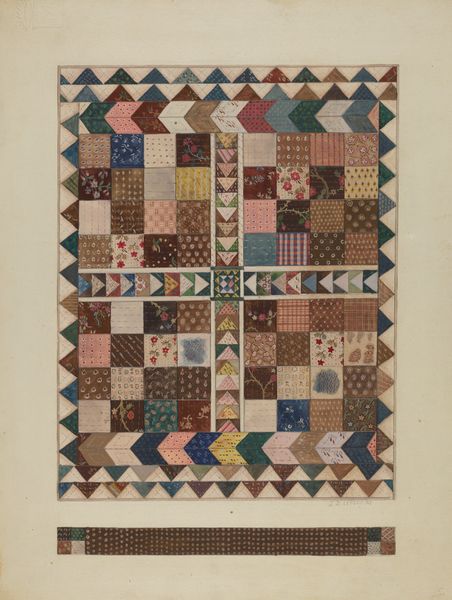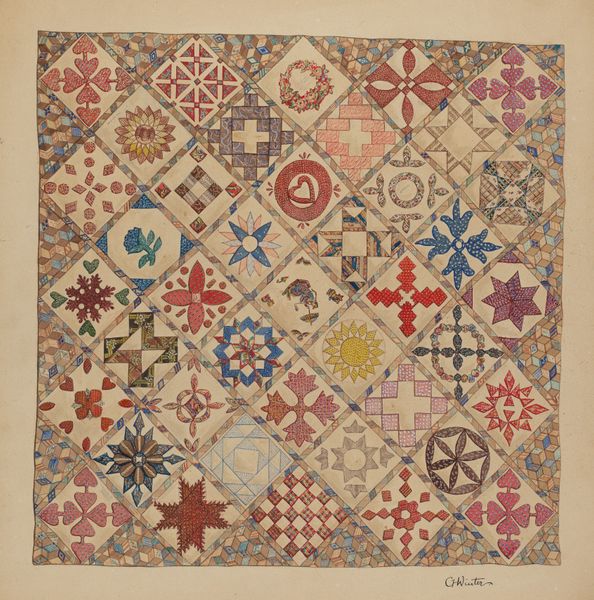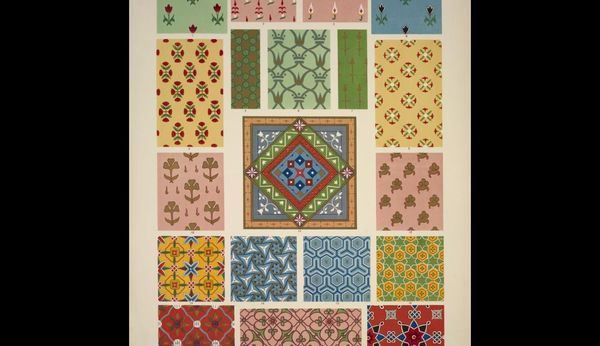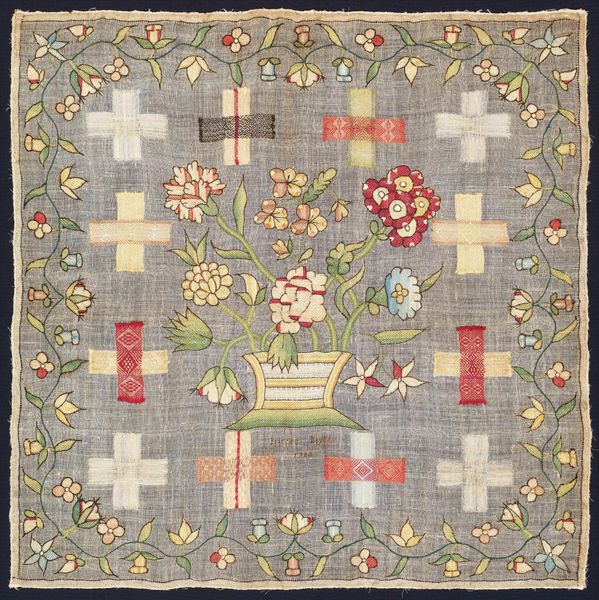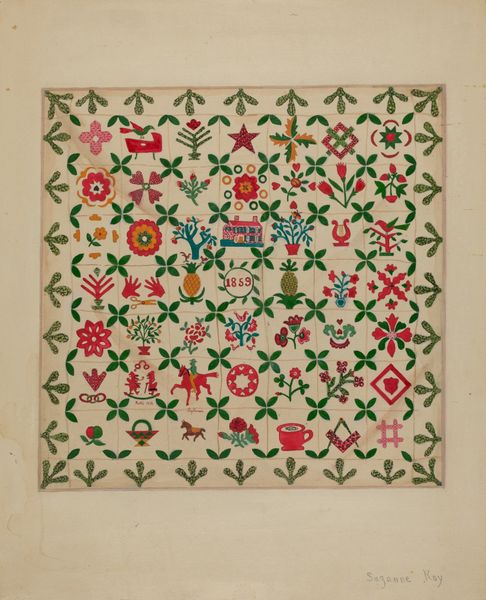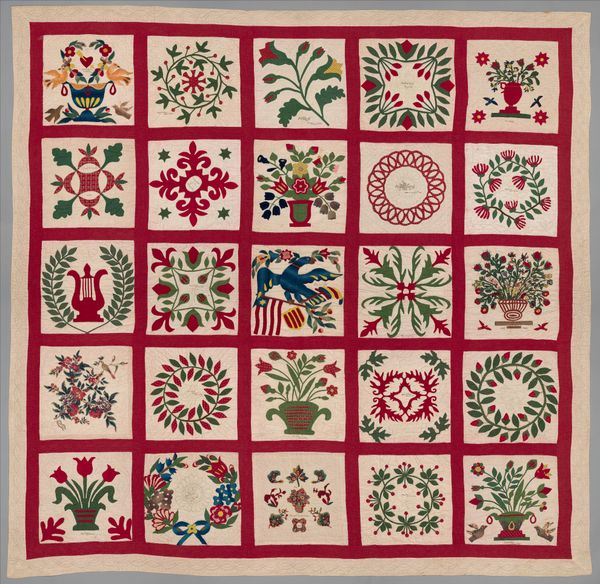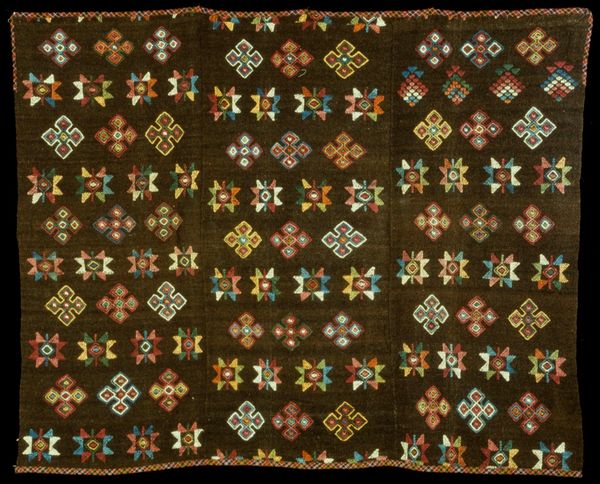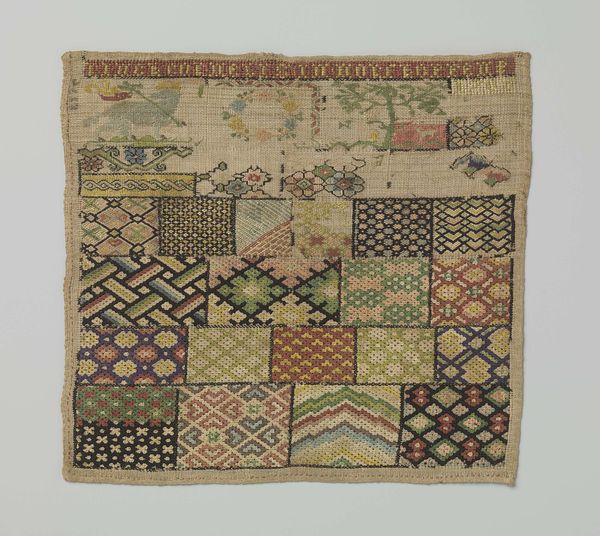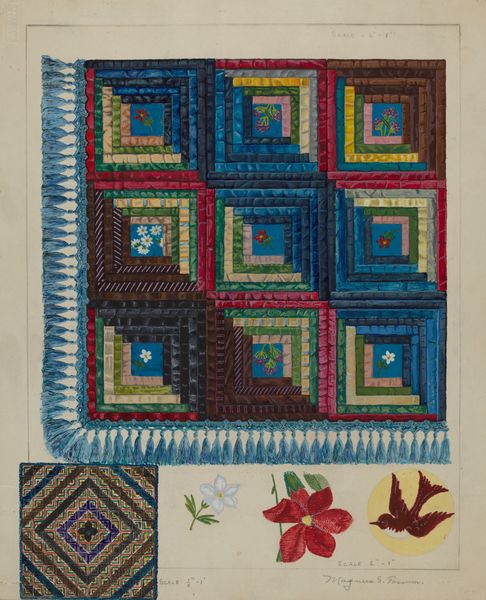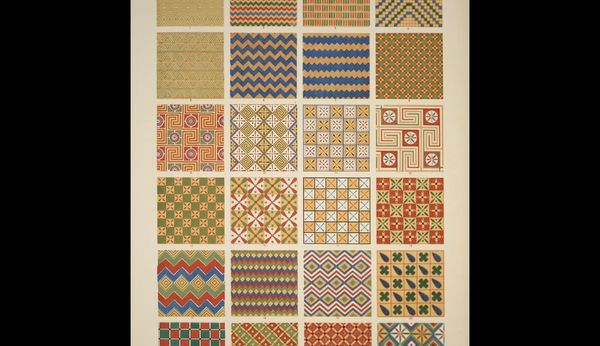
textile
#
textile
#
geometric pattern
#
folk-art
#
geometric
#
decorative-art
Dimensions: 37.3 × 39.4 cm (14 5/8 × 15 1/2 in.)
Copyright: Public Domain
Curator: Here we have a sampler, crafted in 1713 by Margreta Bem. It’s a textile work held in the collection of the Art Institute of Chicago, offering an intimate glimpse into early 18th-century domestic craft and the role of women within it. Editor: What strikes me first is its orderly yet almost chaotic beauty. The sheer number of geometric patterns packed onto a single textile piece creates an arresting visual experience. Each small square is so different. Curator: Indeed. The sampler served several purposes, both practical and didactic. Young women like Margreta would have used these textiles to practice different stitches and patterns, creating a reference library of needlework techniques. Editor: So each little design block becomes its own story! The lion motif coupled with the angel in one block especially grabs my attention, maybe a moral tale, maybe just a delightful whimsy to guide our stitcher's hand? Are there any clues that link these motifs back to folklore? Curator: While we can’t know for sure in Margreta’s case, this piece is a clear signpost for the kind of textile production that defined many communities at the time. Its construction offers clues about educational structures. Were these patterns passed down through families, traded across villages? Also consider how the linen and dyes that would have been used indicate trade routes that brought raw materials. Editor: Looking closely at this artful archive, I find it incredible how thread becomes the script through which a young woman recorded her growing skills and possibly even personal values. The repetitive practice of each pattern likely fostered focus and even contemplation. Each cross-stitch is a tangible memory of Margreta’s time. Curator: Absolutely. And the preservation of these textiles tells a longer tale about the rising status of women in society. Objects once regarded as functional are given aesthetic appreciation within a museum context. They stand testament to a narrative bigger than the woman herself, as documents of history in stitches and thread. Editor: Reflecting on Margreta’s sampler, I am fascinated by the enduring appeal of geometric symbols and the weight they carried for generations of women practicing textile arts. These symbolic shapes carry ancestral stories beyond the tangible skills. Curator: Agreed, and that enduring resonance lies in the work’s power to illustrate that cultural heritage resides in even the most intimate, hands-on forms of creation. We realize folk art, family, cultural practice, were once held between hands, preserved thread by thread.
Comments
No comments
Be the first to comment and join the conversation on the ultimate creative platform.
